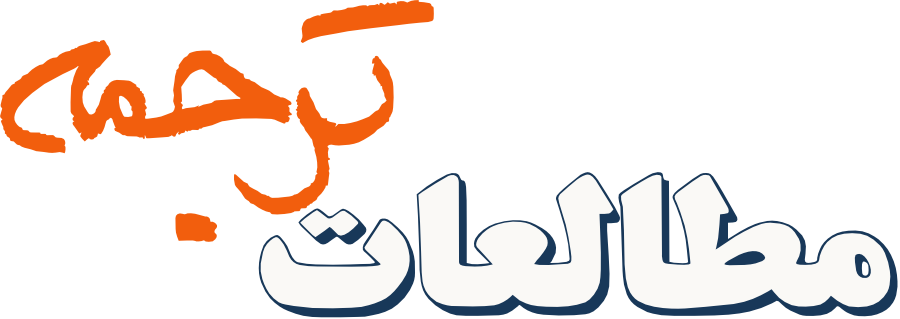بررسی ترجمۀ کتب پزشکی در دورۀ قاجار (1175–1304 شمسی): یکی از عوامل انتقال طب جدید به ایران
چکیده
هدف از پژوهش حاضر بررسی اجمالی تاریخ پزشکی در دوران قاجار با تمرکز بر ترجمۀ کتب پزشکی در این دوران است. در این پژوهش با روش بررسی تاریخی (مدل تاریخنگاری پیم 1998) و تحلیل دادهها مشخص شد که در زمان قاجار در ابتدا روش معمول درمان بهصورت طب سنتی بوده است که تحت تأثیر نهضت تجددخواهی و نیز عواملی از جمله تأسیس مراکز علمی مانند دارالفنون، اعزام دانشجویان به خارج و بهکارگیری استادان خارجی، بهتدریج جای خود را به روشهای مدرن داد و آموزش و تحصیل پزشکی نوین معمول شد. علاوه بر این بهنظر میرسد ترجمه یکی از مهمترین روشهای انتقال علم پزشکی نوین است. بررسی موضوعی انجامشده روی کتب ترجمهشده در این حوزه نشان میدهد که در زمان قاجار حدود 446 کتاب در درجۀ اول از زبانهای عربی، سپس فرانسوی، لاتین، هندی و انگلیسی در 19 موضوع پزشکی ترجمه شده است. بررسی موضوعی این کتابها نشان میدهد که حوزۀ بیماریهای داخلی با 100 عنوان بیشترین بسامد را دارد و پس از آن طب سنتی با 86 عنوان در مقام دوم قرار دارد، بعد از آن به ترتیب حوزههای داروشناسی، تشریح اندامها و جراحی، بیماریهای عفونی، گیاهان دارویی، بیماریهای آمیزشی، زنان و مامایی، آسیبشناسی و چشمپزشکی قراردارد. همچنین زبان مقصد ترجمۀ این کتابها بیشتر فارسی، سپس عربی، اردو و ترکی بوده است.
کلمات راهنما:
دورۀ قاجار, علم پزشکی, کتب پزشکیمراجع
آبراهاميان، يرواند، (1377). ايران بين دو انقلاب: درآمدي بر جامعهشناسي ايران معاصر، ترجمة احمد گلمحمدي و محمدابراهيم فتاحي وليلايي، تهران.
آدميت، فريدون (1354). اميركبير و ايران، تهران.
آذرنگ، عبدالحسين، (1394). تاریخ ترجمه در ایران از دوران باستان تا پايان عصر قاجار، انتتشارات ققنوس.
ابننديم (1350). كتاب الفهرست، چاپ محمدرضا تجدد، تهران.
اقبال آشتياني، عباس [بی. تا.]، تاريخ تمدن جديد، قسمت 2: تاريخ تمدن جديد در ايران، [بی. نا.].
الگود، سیریللوید (1387). تاریخ پزشکی ایران و سرزمينهای خلافت شرقی، مترجم، باهر فرقانی، مؤسسه انتشارات امیرکبیر.
انوار، عبدا. (1358)، فهرست نسخ خطي كتابخانة ملّي، جلد 3، تهران.
بابازاده، شهلا (1378). تاريخ چاپ در ايران، تهران.
جان احمدی، فاطمه (1379). نهضت ترجمه؛ نتایج و پىآمدهاى آن، مجله تاریخ اسلام، شماره 4.
حاتمی، زهرا (1392). راههای عاميانه پيشگيری و درمان وبا، طب سنتی اسلام و ایران، جلد ۴ شماره ۲.
دانش پژوه، محمدتقی (1360). نخستين كتابهاي فلسفه و علوم جديد در ايران، نشر دانش، سال 2، ش. 2.
دانشنامه جهان اسلام (1379). جلد 5، مدخل پزشکی، تهران: بنیاد دایرةالمعارف اسلامی.
دانشنامه جهان اسلام (1382). جلد 7، مدخل ترجمه، تهران: بنیاد دایرةالمعارف اسلامی.
ذهابی، مجتبی؛ شهیدانی، شهاب، کرمعلی، اکرم (1389). بررسی وضعیت پزشکی ایران عصر قاجار قبل از تأسیس دارالفنون، پژوهشنامه تمدن ایرانی، دوره 1، شماره 2 (شماره پیاپی 2)، پاییز و زمستان.
روستایی، محسن (1382). تاریخ طب و طبابت در ایران (از عهد قاجار تا پایان عصر رضاشاه) به روایت اسناد: شرح حال طبیبان نامدار و ناشناخته ایران، سازمان اسناد ملی ایران.
زنديه، حسن؛ احمدي رهبريان، حسين؛ خاناحمدی، محمد (1396). بررسي جايگاه علم طب و طبابت در دوره ناصري، پژوهشنامة تاريخ اجتماعي و اقتصادي پژوهشگاه علوم انساني و مطالعات فرهنگي، سال ششم، شمارة اول، بهار و تابستان.
فلور، ویليام (1387). سلامت مردم در ایران قاجار، مترجم، ایرج نبیپور، دانشگاه علوم پزشکی و خدمات بهداشتی درمانی بوشهر.
كيانفر، جمشيد (1375). ترجمه: گذرگاه انتقال فرهنگ غرب به ايران» در كتاب رويارويي فرهنگي ايران و غرب در دوره معاصر، تهران: سروش.
محقق، مهدي (1369). گذري بر كتابشناسي پزشكي اسلامي، كتابداري، دفتر 16.
منزوی (1381). فهرستواره کتابهای فارسی (جلد 5)، انجمن آثار و مفاخر فرهنگی.
ناطق، هما (1988). ايران در راهيابي فرهنگي: 1848ـ1834، لندن.
یونت، لیزا (1399). تاریخ پزشکی، مترجم، رضا یاسایی، ققنوس.
Pym, A. (1992). Shortcomings in the historiography of translation, 34(4) Bable.
Pym, A. (1998). Method in Translation History. Routledge.
Downloads
چاپشده
ارجاع به مقاله
شماره
نوع مقاله
DOR
مجوز
Copyright Licensee: Iranian Journal of Translation Studies. This article is an open access article distributed under the terms and conditions of the Creative Commons Attribution–NonCommercial 4.0 International (CC BY-NC 4.0 license).





